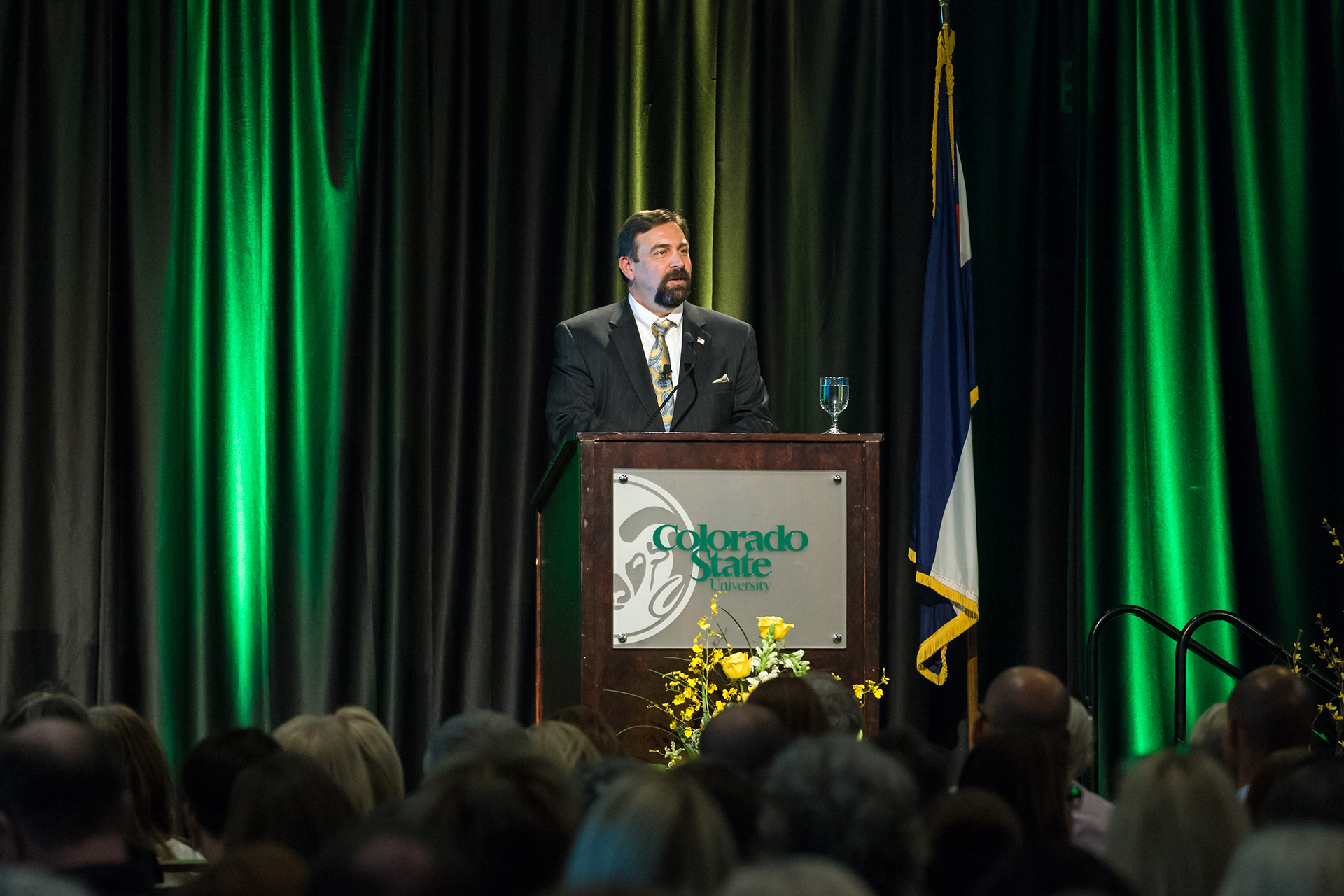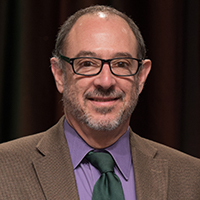
In the opening days of November 2008, we got two new Presidents to lead us. One was a charismatic and articulate leader out of Illinois, able to connect to crowds large and small, clearly demonstrating intelligence, seriousness of purpose, and humor – and able to inspire us with a message of Hope. The other guy was Barack Obama.
I was in Pueblo visiting CSU-P that day, connecting with my counterpart dean there at a breakfast meeting, and my phone rings: it’s Tony Frank. “Rick,” he says, “I need you to return to campus this afternoon – we’ll be having an emergency meeting of the council of deans to consider our collective next steps.” CSU’s current president had just resigned and Tony appointed interim.
I drove back north as soon as I could. That was a dramatic evening meeting for sure, but from that very first meeting as president Tony took control and gave us confidence that despite the volatility of the moment, Colorado State University was going to be just fine.

That wasn’t so clear to a lot of folks as the winter of 2008-09 moved into the spring. As Tony assembled his cabinet in that period, focusing attention on the university, the external financial forces were getting darker and darker, and we soon realized that we were going to be dealing with the worst recession of our lifetimes. We lost about a third of our state funding then.
As ever, Tony was steady. I recall a budget meeting that spring, planning to celebrate our 140th birthday, in his conference room looking out over the Oval. He pointed to the emerging greenery, and reminded us all that our jobs were to make sure that CSU would continue to thrive and be a great land-grant university on our 150th birthday, and for the next 140 years after this. We would get through this crisis – indeed, that was our job, and we were going to do our job.
Foundation for recovery
Under his leadership, we did. We navigated those recession-era budget cuts with no little pain – but with an eye to preserving our core mission elements and laying the foundation for recovery. He chose to proceed with the public phase of the first capital campaign that year, despite some exhortations to postpone it – because he had confidence that our alumni, friends, faculty, and staff would rally well to his message of hope and optimism. They didn’t let us down – that campaign ended as a great success, and now a second campaign, double in size, will do so as well. He also chose to proceed with plans to rebuild – virtually recreate – our campus. We live here today in a university that simply wows visitors, and enables us to attract the best and brightest students, faculty, and staff to work and learn here.
Tony and I are different in many ways. He’s tall, handsome, charismatic, eloquent, and I’m, well, a posture-challenged math professor with the sartorial style to prove it. We do share a few interests though: We are both Nero Wolfe fans, and baseball nuts. (He’s worse than me.) Some years ago his Cubs and my Red Sox were playing each other in a rare interleague series. I plastered the rotunda of the admin building with all sorts of Boston schwag to stake my claim. He didn’t try to match me that time – but called the CSU PD and had my car ticketed, with the offense written clearly on the ticket that the spot was only for Cubs fans.
We do agree that academics are at the heart of our university, and that faculty are the foundation for all that we do in education, in discovery, and in community engagement. We also realize that faculty need to be supported by great staff, and in our primary mission of fostering student success, our colleagues in student affairs are critical partners. I submit that a balanced approach to managing the campus, while simultaneously having uncompromising goals that drive us relentlessly to excellence, has been part of the formula here during Tony’s administration.
Part of Tony’s success is that he has been a faculty member himself, and uses his faculty muscles to teach his team, and all of us, how leadership works. As a good scholar himself, he’s studied it too – some of you may have noticed occasional references to the writings of a former Illinois-bred president.
I could speak of many qualities here, but I’ll close with one that stands out for me: Tony clearly believes that with leadership comes the responsibility to be a champion for the powerless among us. We see this in his establishment of the Commitment to Colorado scholarship; in the creation of a number of commissions dedicated to giving a voice to groups that are not well represented otherwise; in his steadfast insistence on improving the working conditions for non-tenure-track faculty; in his creation of the Office of Diversity and the Women and Gender Collaborative; and in his investments in student health infrastructure. I could go on, but you get the idea.
Finally, for a university president, there is no more important goal than the success of our students, and the belief in them, in their future, and in our common future. On the subject of leadership, I think he’d be the first to declare that our students are the leaders that we have been waiting for. Tony Frank has worked hard, and long, and well to make sure that statement is true, and I’m grateful and honored to have been a part of his team while he served as the 14th President of Colorado State University.